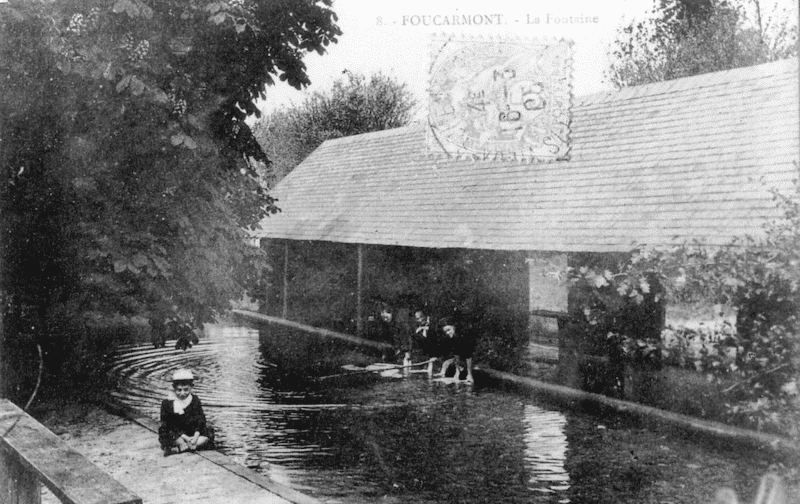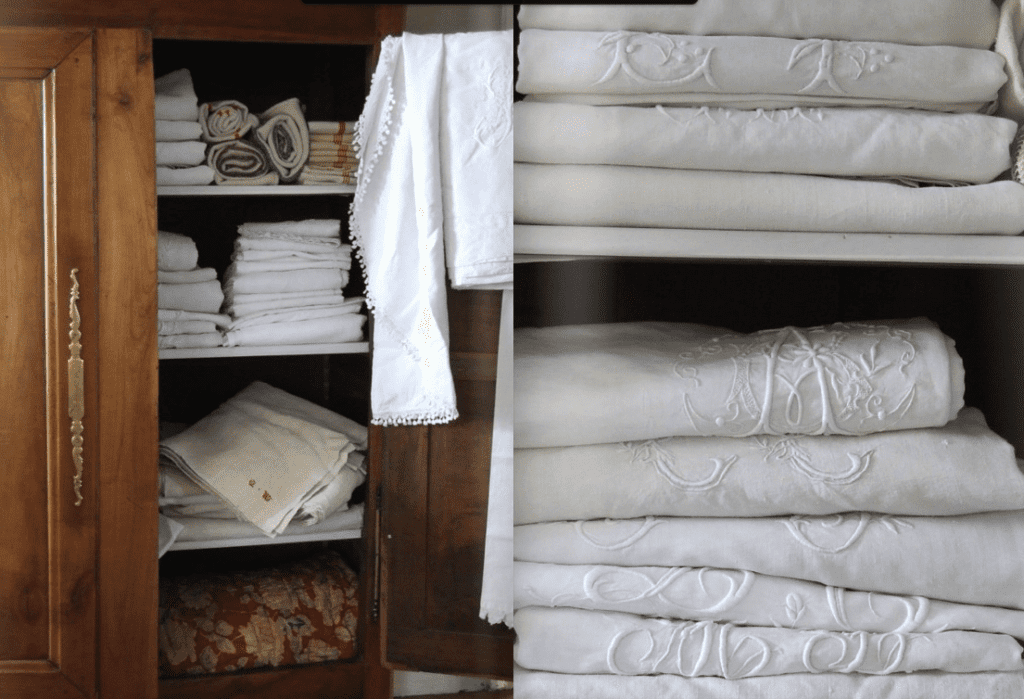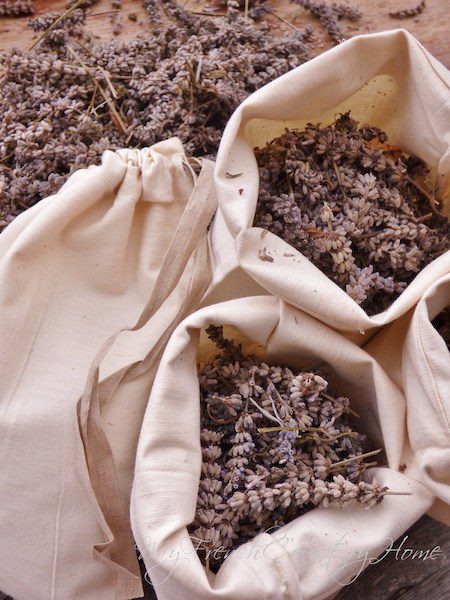An integral part of the French textile industry, Normandy in northern France has a long history of producing it. A resistant fabric, it is stronger and quicker to dry than cotton, making it a popular choice for cleaning and workwear. While it is still a kitchen staple, you’ll see it as much in fashion and homeware.
Antique French linen is an essential part of every French country bedroom. Often with monograms or embroidered letters or motifs, these pieces have a story woven into their time-old fabric. Let’s look at how to care for antique French linen in this special guide.
SUBSCRIBE TO THE MAGAZINE
The History of French Linen

© Foucarmont
To understand how to care for antique French linen, we need to look at the history of linen, in particular how it was laundered. Villages all over France had a wash-house. A small building built on the edge of a river would have one side exposed to the water and steps leading down to water level with large flat stones in a row.
In the 19th century these were in daily use. Maids and housekeepers from local houses would come with their baskets of house linen and kneel down on the flat stones. They wet the fabric and rubbed in soap before pounding the sheets and the clothes, then let them unfold in the river current to rinse out the soap.
Next, they would haul the very heavy sheets out of the water and twist them to squeeze out as much water as possible (usually two people were needed for this). Once home, the sheets were either hung to dry or laid flat on the ground, in the meadows, where the chlorophyll from the green grass would act as a whitening agent on the linen as it dried in the sun.
Exhausting but a good reminder of just how strong linen can be! In today’s world of washing machines, the hard work is done for us…
A Guide to Caring For Antique French Linen
From washing and drying to folding tricks, these simple rules on antique linen care are easy, meaning that your linen can be enjoyed every day and will last for longer.
How To Wash and Dry Your Linen

All linen sheets can be washed on a hot to very hot wash in the machine and always hung out to dry (ideally outside for that crisp and fresh sensation).
It is preferable not to dry old sheets in a tumble dryer. This can damage the fiber of the fabric and the sheets are impossible to smooth once they get too dry.
Read next: How Linen is Made in Normandy
Tips For Ironing Vintage Linen Sheets
This isn’t an obligation but many people like to have sheets ironed flat. They look better on the bed and are definitely easier to store neatly than if they are simply folded, post wash.
As antique French linen are typically huge pieces of fabric, ironing old sheets is a bit of a project. Rather than ironing each one in a single thickness, pre-fold them into four width-wise. Folding them across the width means that the top of the sheet with the embroidery or monogram remains visible when it is stored and easy to find when needed.
It is better to use a steam iron or a roller press. If the sheet is a little damp after ironing, then hang it out, still folded, for a couple of hours until totally dried out and then folded smaller to store it.
How To Store Antique French Linen

Everyone loves the aesthetics of an armoire (“chest of drawers”) piled high with beautiful old sheets. To achieve the look with the monograms showing requires some careful folding, but with a little patience it can be done. The embroidered top sheets are great for using with a duvet, the long turn-backs being folded down over the duvet when the bed is made.
For easy retrieval it is best to store pillow and bolster shams as separate piles, with the pillows preferably stored in pairs.
Tuck big cotton bags filled with lavender in between the sheets so they release their delicious perfume each time the linen is moved.
Removing Stains From Antique Linen
When buying antique linen it is good to be aware of stains that can be removed, and those that will never budge. Some people want totally pristine white sheets, while others feel that a tiny mark doesn’t spoil the vintage beauty.
The toughest stains to remove are the fold lines that you sometimes find on very old sheets that have been stored untouched for too long.
Often on an old sheet there will be a couple of small spots of rust. If the marks are a long way down the sheet and are small, they can be ignored, knowing that they will never show when the sheet is used.
For more prominent rust marks there are products that can help remove them. Household brands such as OXYClean or Vanish work well. For something more natural, many people swear by lemon juice and salt left on the stain in full sunlight.
Avoid using bleach on old linen. This should only be a last resort for a stain that won’t come out in the wash. Bleach is extremely aggressive on textiles and should never be used undiluted, and always rinsed very thoroughly.

Repairing Tears or Holes
Naturally, as a vintage product, antique linen requires more care and maintenance than something brand new. Before buying antique linen, always take a few minutes to unfold them completely to check their condition and if any repairs are needed.
A small tear or a hole can be mended or invisibly patched if you are willing to spend the time and stitch it up.
What cannot be fixed is a sheet that has been used so much that it is worn thin. If you have bought a sheet in this condition by mistake, then the best solution is probably to cut it up and use the good pieces for fabric to back cushions or other sewing projects.
Voila ! At the end of the day the linen sheets are there to be used and enjoyed, so get them out of your cupboards and onto your beds!
Photography by Sharon Santoni

